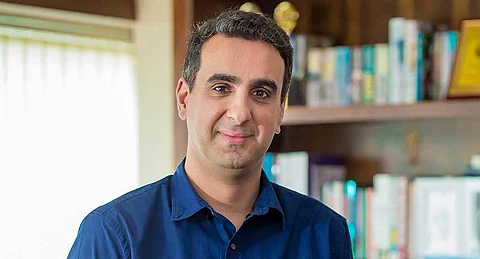

E-learning is the in thing and every second young Indian is looking for a course that fits them the best. Whistling Woods International’s e-learning courses on filmmaking stand out — they are not just interactive and genuine they also take care of the most minute of details to deliver a holistic education. We had a chat with Rahul Puri, the Head of Academics at the Mumbai-based institute. Here are excerpts from the conversation:
Why are courses offered by WWI different from other virtual or online courses available?
Whistling Woods International’s (WWI) Virtual Academy hosts courses that are designed to appeal to the interests of students at every level. For the casual learner, we have certificate courses, which can be completed in three months or less, at a pace convenient for the students. Students who are keen on studying filmmaking full-time and are interested in a career in cinema, can opt for our Diploma programmes. These programmes serve as an introduction to the art of filmmaking. These intensive programmes combine structured curriculums under the oversight of personal mentors, video-based instruction, and the opportunity to attend live sessions and workshops at our Mumbai campus.
Filmmaking is a hands-on, practical intensive subject. How did you manage to make it go virtual?
E-learning is generally perceived to consist of a professor delivering a lecture to a camera. That’s not the case at the WWI Virtual Academy. We ensure that our lessons are engaging, interactive, and effective. To that end, we’ve broken up each training video into three distinct sections:
Part one – The professor explains the theory behind the lesson being taught.
Part two – The practical application of the lesson is demonstrated on camera. For example, a lesson on cinematography with the purpose of teaching lighting styles and setups will feature a built set, multiple subjects, and a director displaying the effects of lighting on the set.
Part three – The concept is taken and its lessons applied and compared to a recently released movie or TV show.
This constitutes the structure of each video lecture – one that’s practically identical to our offline classes. We further reinforce these lessons by conducting live film analysis on a selection of movies. Once all the students have seen a given film, lectures are delivered via a closed group video conference and subsequently discussed offline. We also go a step further and offer students the chance to connect with us offline at our Mumbai campus.
Any plans of scaling this up?
One of the core philosophies behind the WWI Virtual Academy was the democratisation of creative arts education. We want every prospective learner to have easy access to quality education. To that end, we’re constantly exploring content and distribution partnerships. Content partnerships, with alumni and other industry experts, help us to create and deliver relevant, high-quality content to our students. However, it is vital to remember that the creative arts occupy a niche’ in the field of education. That makes us determined to provide a curated experience that allows the talents of a select group of students to flourish, rather than onboarding massive classes and offering a substandard experience.
E-learning is gaining popularity now but it is expensive and not very accessible to the majority of the population. Your thoughts?
The perceived expense of e-learning has to be viewed in relative terms. E-learning began with the Massive Open Online Course (MOOC) model, which offered most classes for free or at a discounted rate. There was no accountability in terms of testing and academic rigour, and students were free to access the content. Online courses today are structured from both an academic and assessment perspective. These programmes require dedication and commitment, and can’t be completed on a whim.
Accessibility and internet penetration is low in India, especially in rural areas. However, the advent of cheaper data and the growing popularity of smartphones has solved many of these issues. These trends are only set to accelerate in the future, and it’s estimated that over 627 million Indians will have internet access by the end of this year.
What do you think of the draft of the NEP that talks about the inclusion of more private players in the education sector?
The introduction of new players is bound to have a net positive impact on the sector. Their arrival will be accompanied by an infusion of funds, allowing for world-class teachers to be recruited and trained. Significant investments in infrastructure are always required for new endeavours. Private players also bring with them experience from the international stage. This is vital in the EdTech space and will provide us with a reference point on the challenges and opportunities faced by start-ups. There should be an effort to learn from these entities and they should be viewed as complementing forces to traditional means of education rather than viewing them as threats.
